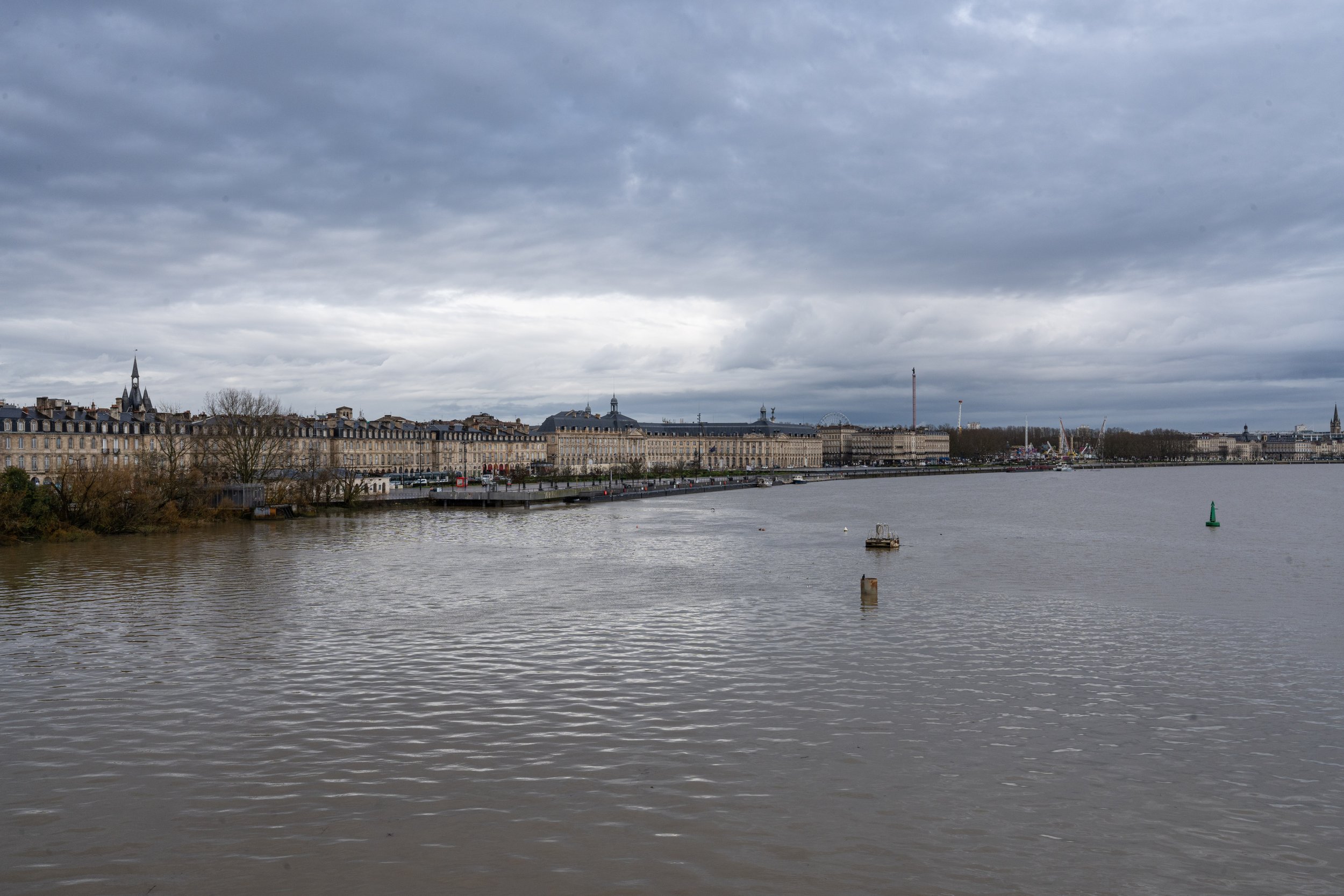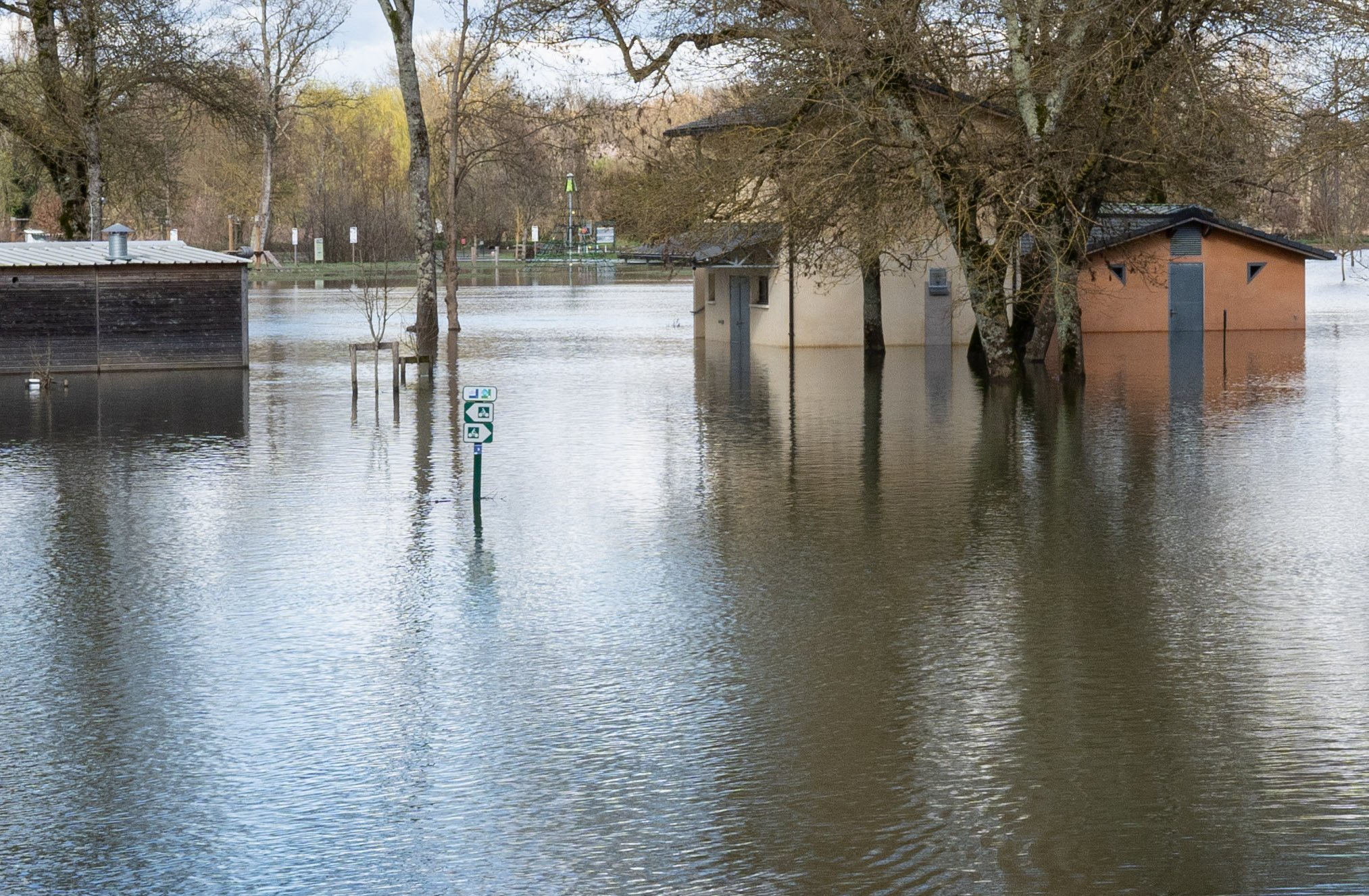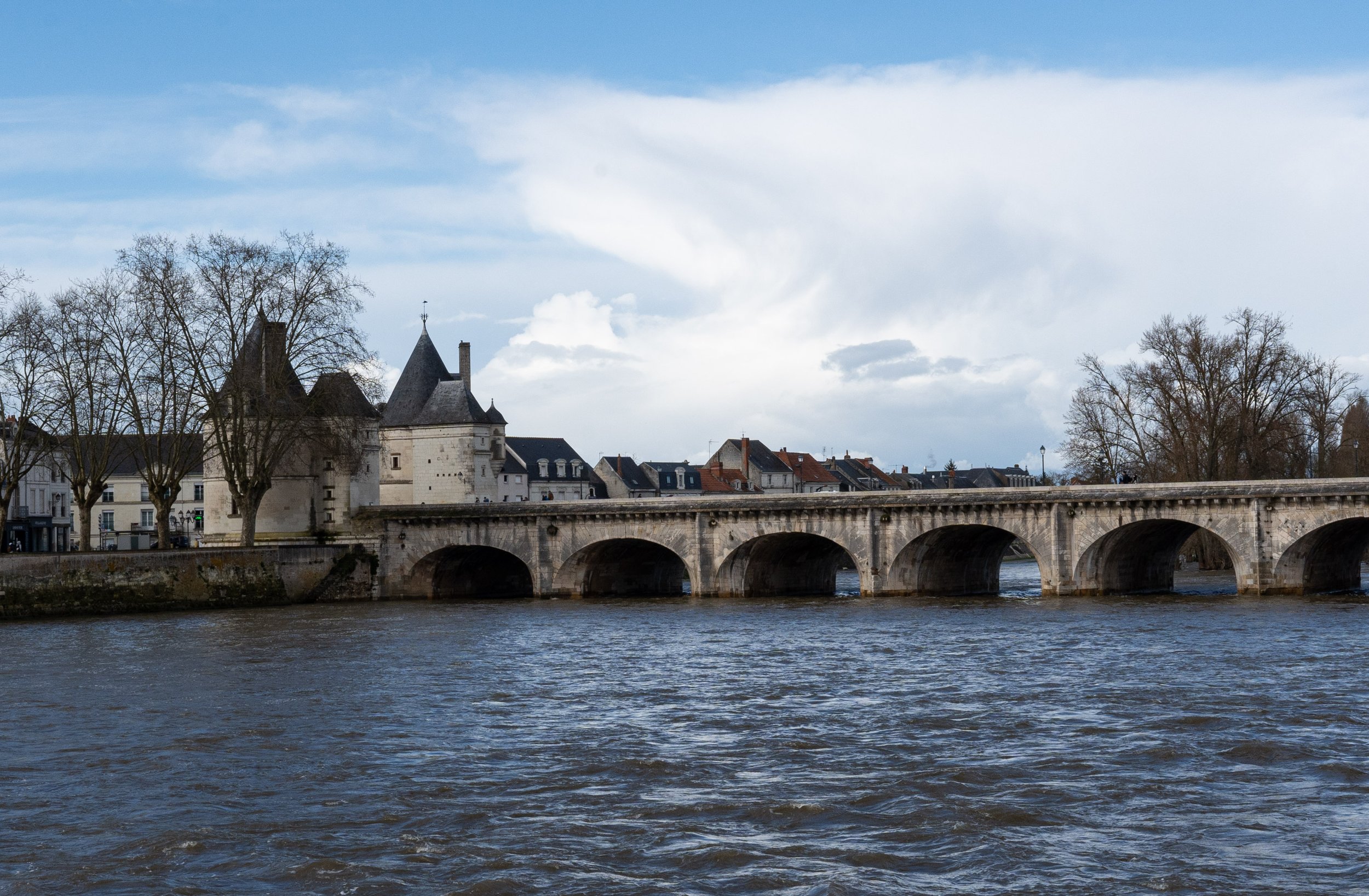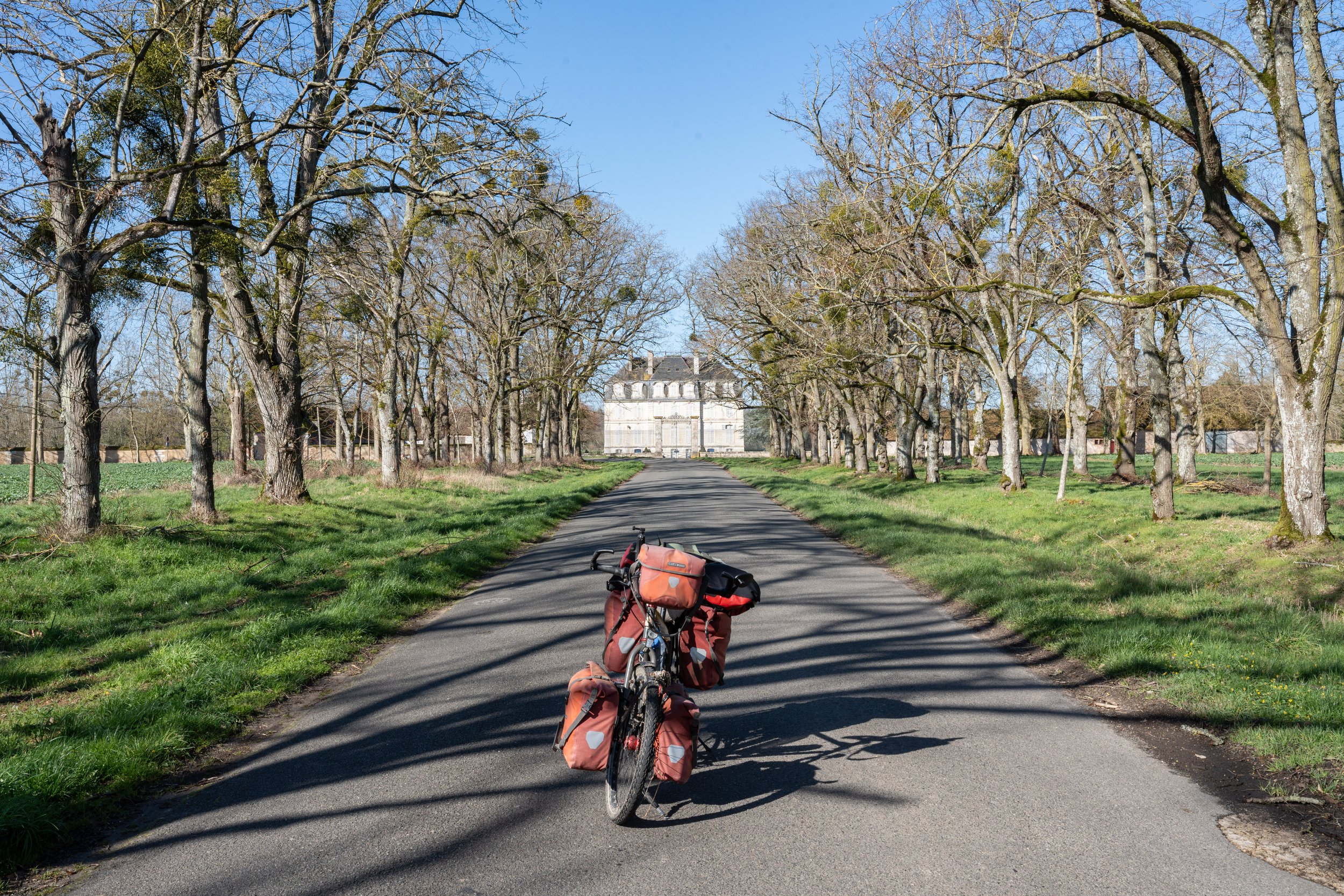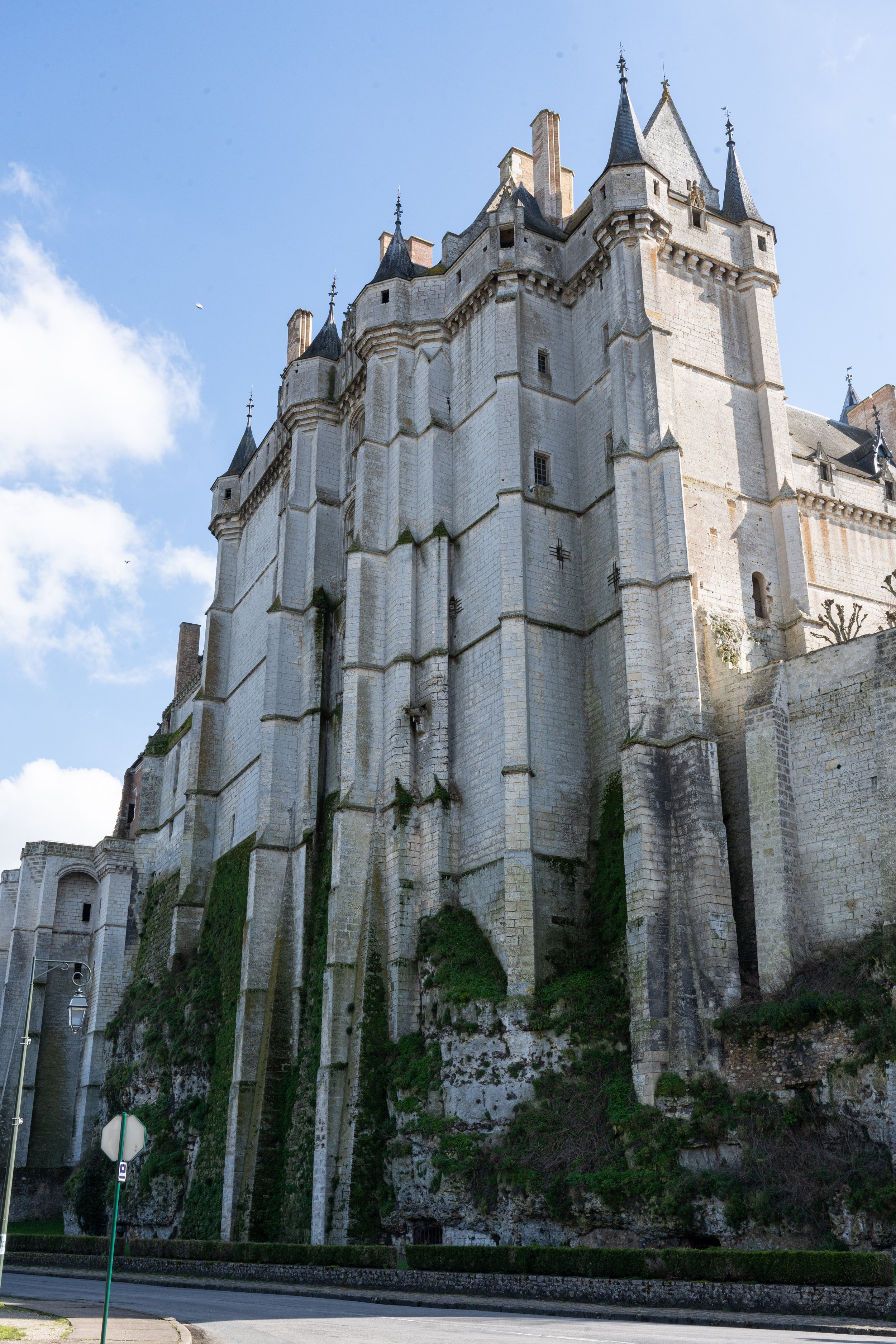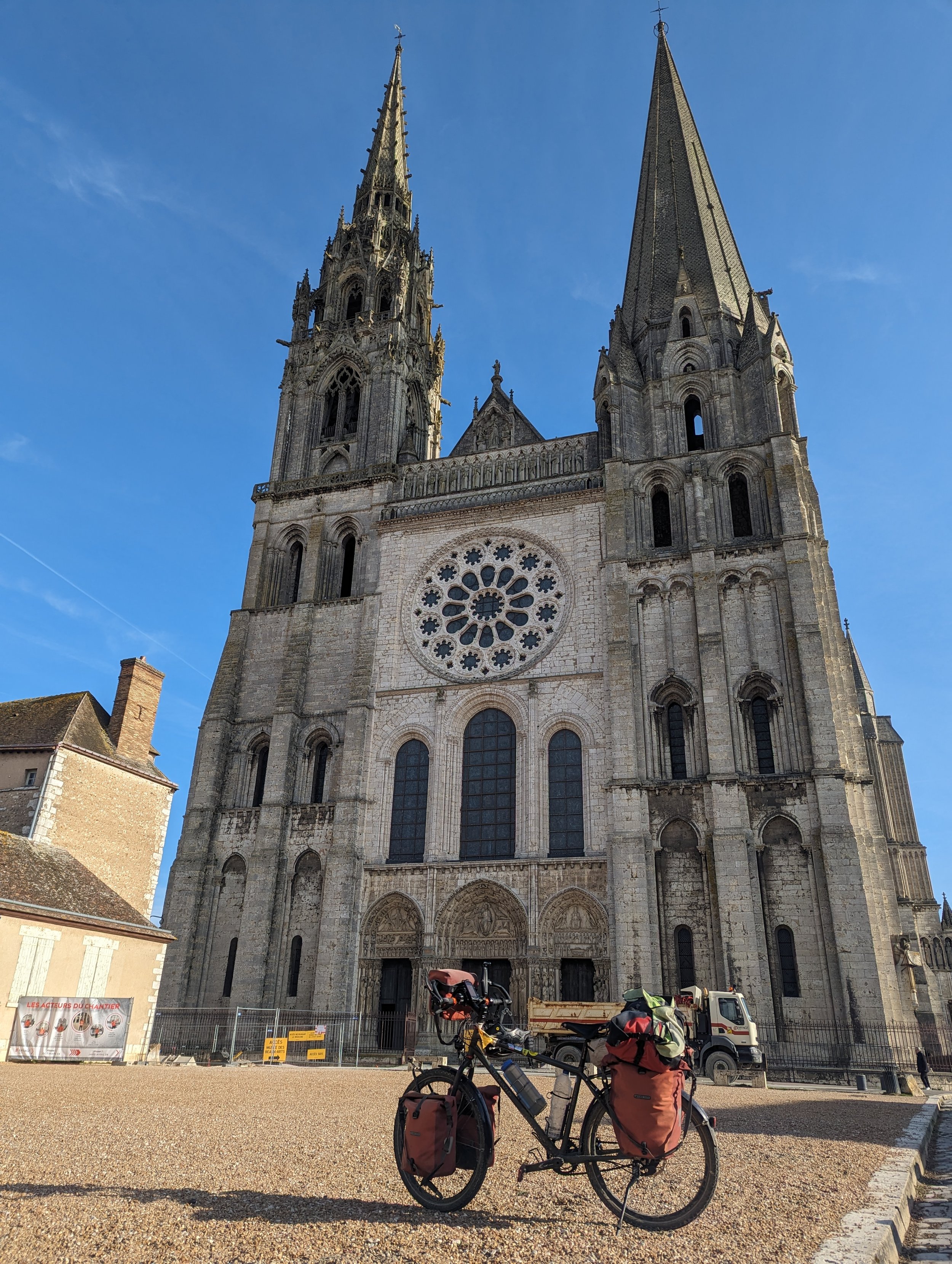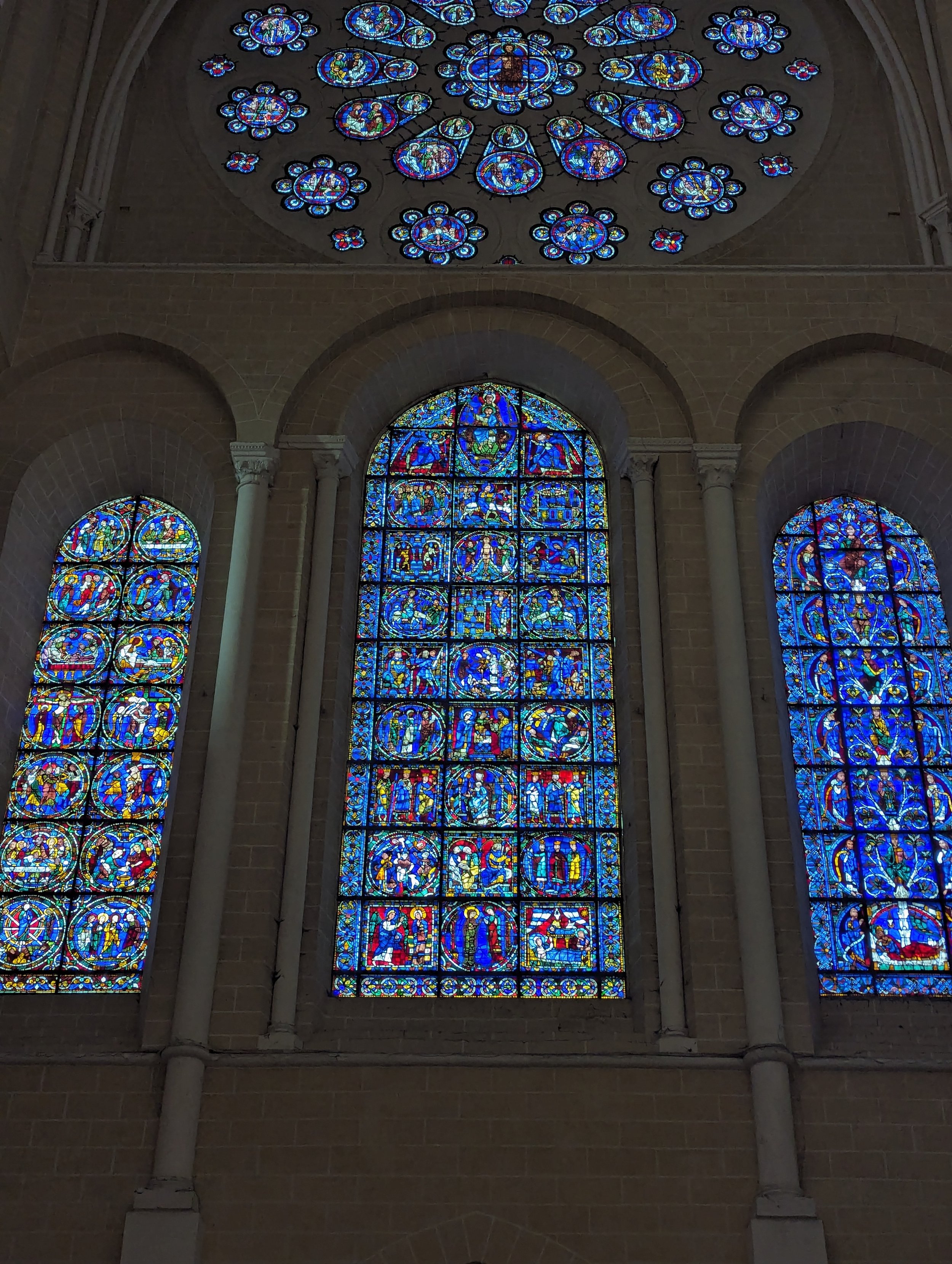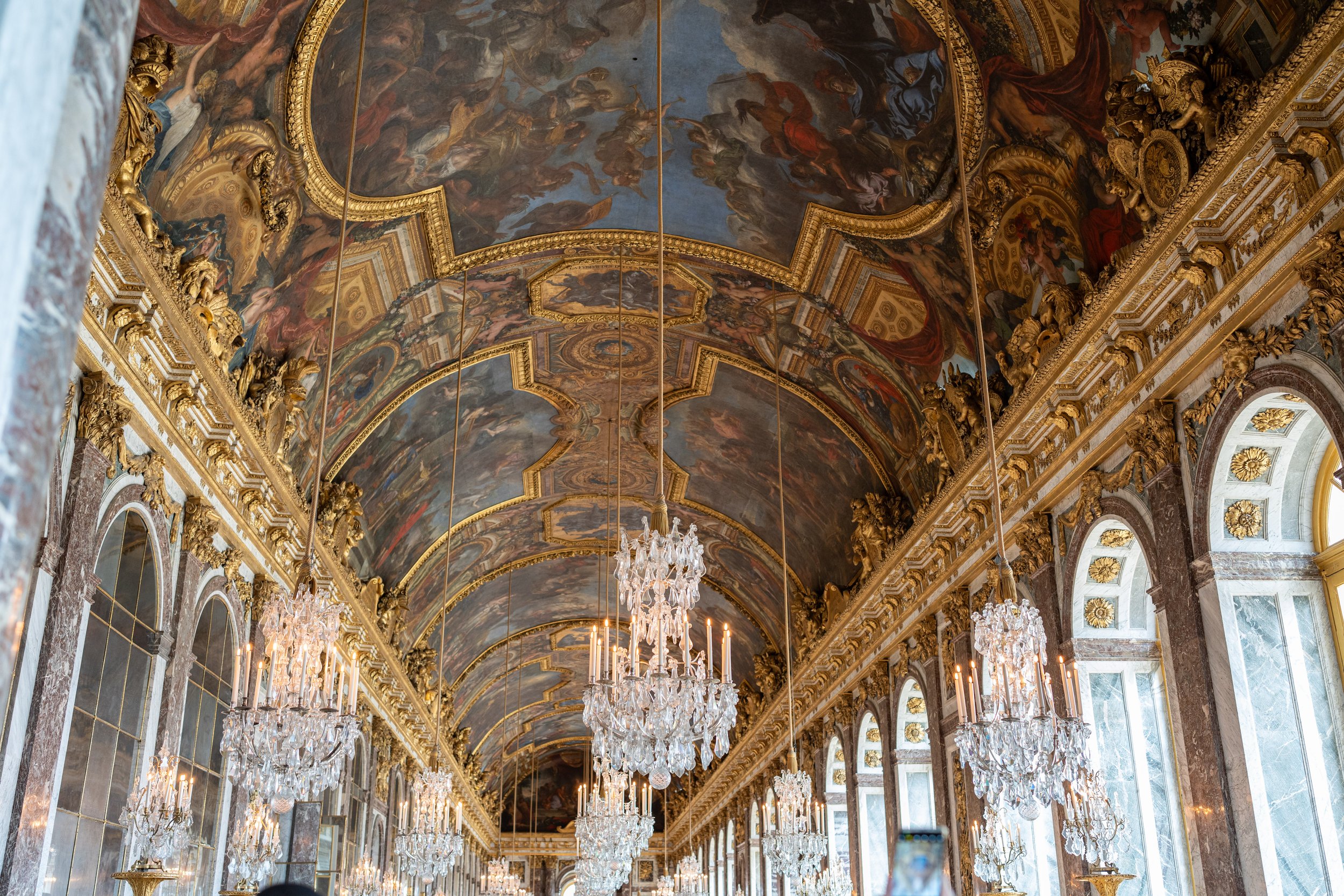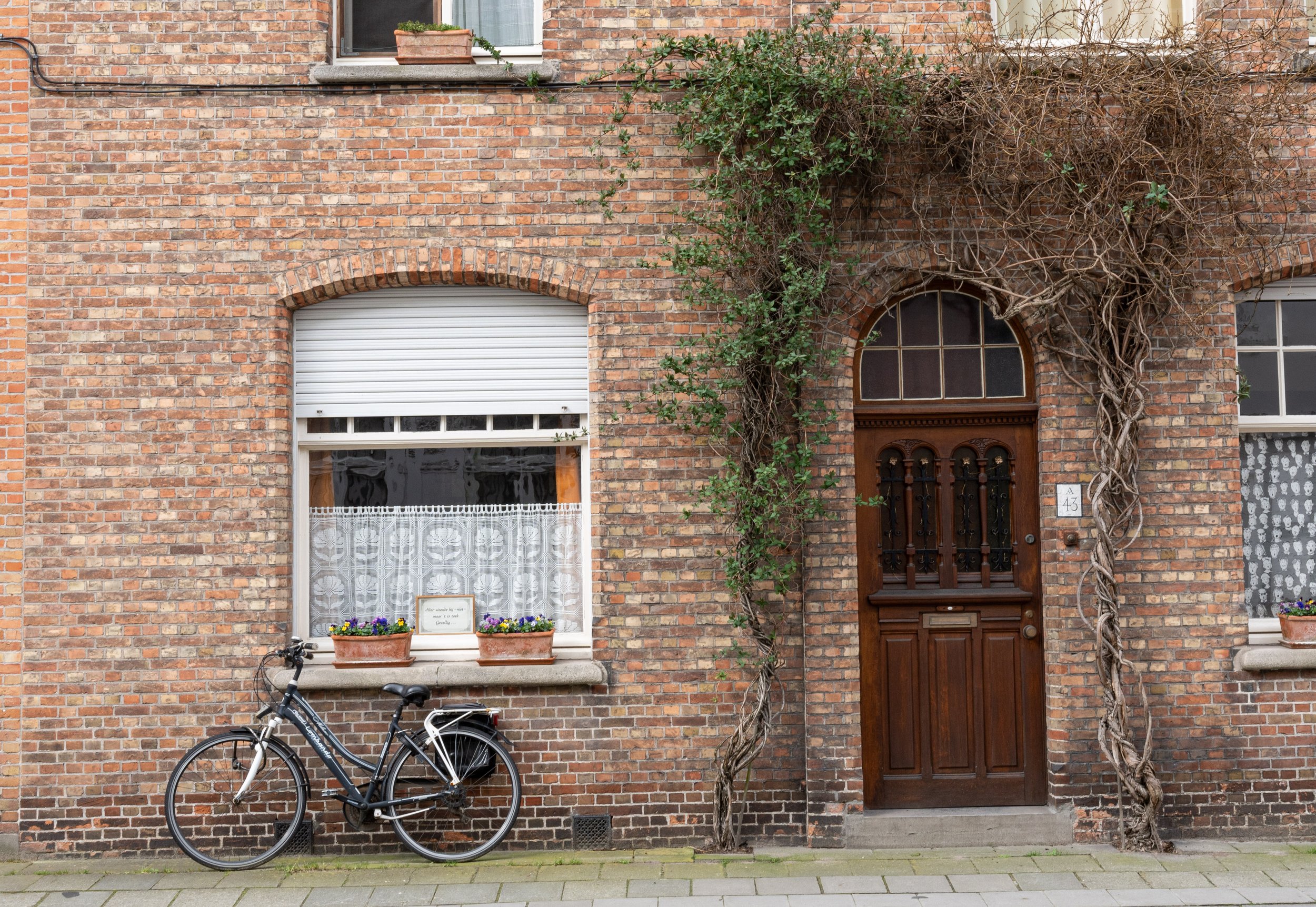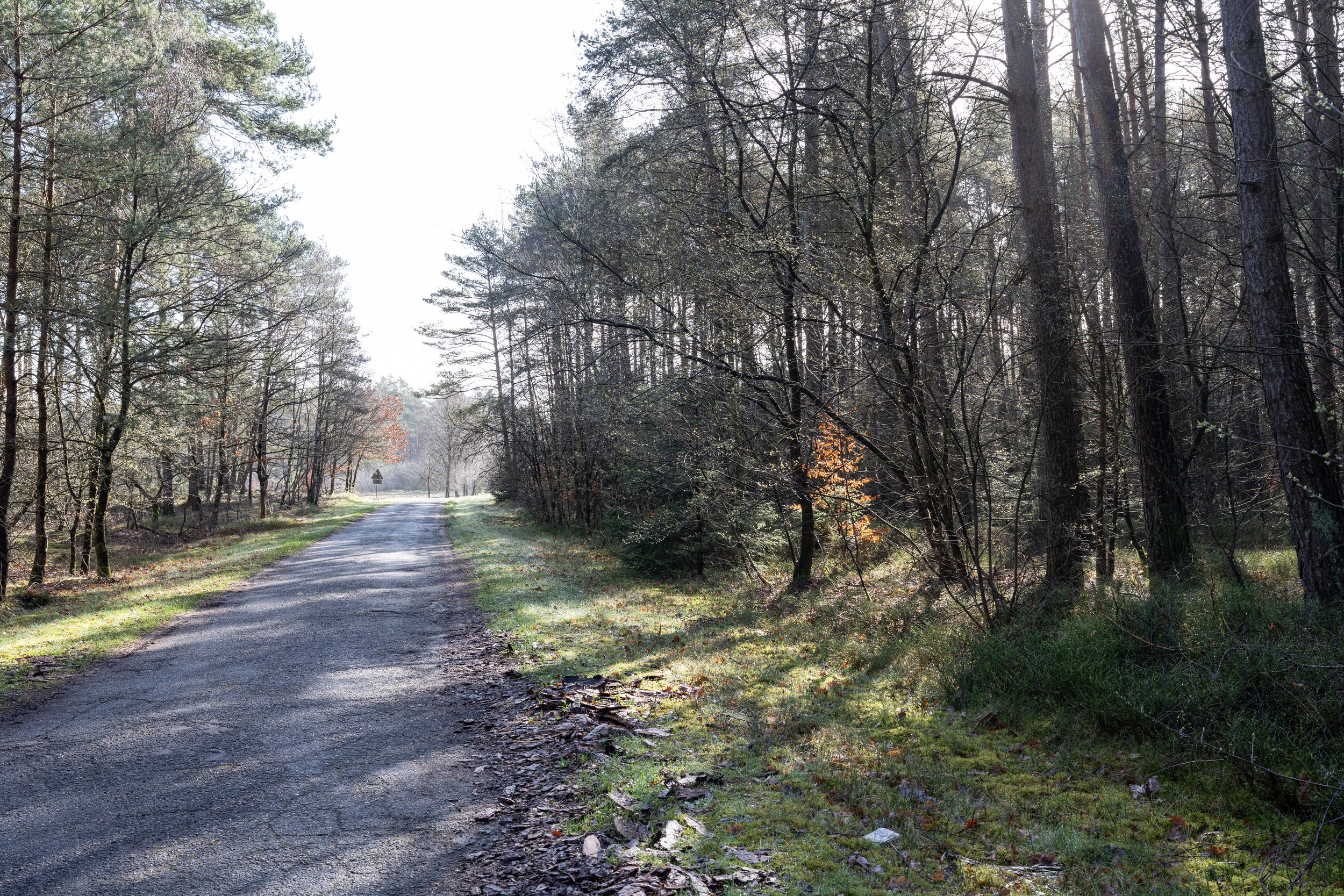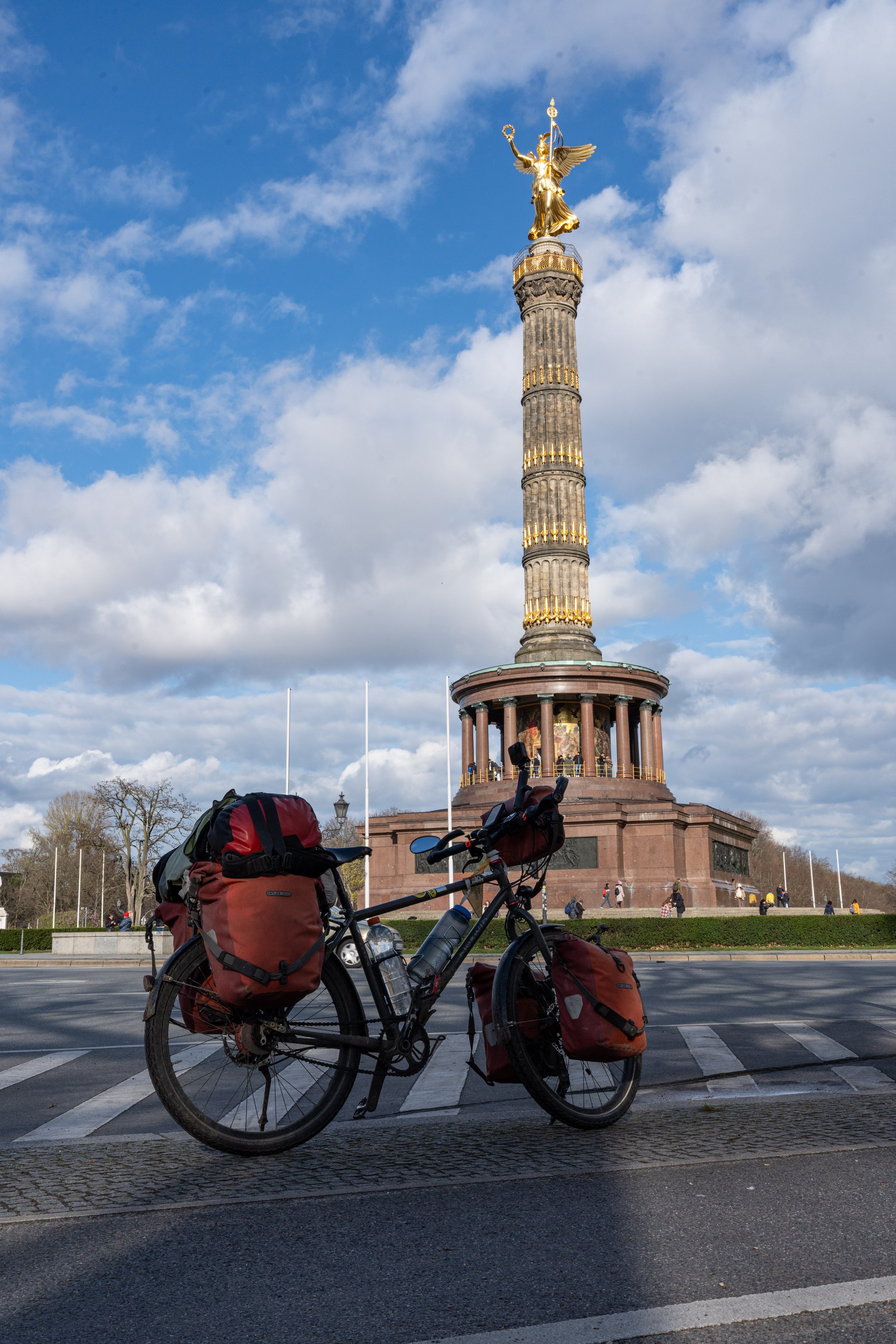From Bordeaux to Berlin - the “little journey” is complete
From Bordeaux to Paris: wet and cold to the Eiffel Tower
After being incredibly lucky with the weather over the past two years, I was already imagining how I would write about this luck in January. I didn't know what March would be like. Bordeaux said goodbye to me with rain that would more or less accompany me all the way to Germany. The lunch breaks in cafés sometimes lasted up to five hours if it was too uncomfortable outside the door. At some point I just reached a point where I didn't care about the omnipresent damp anymore. Tent wet, mat wet, sleeping bag (somewhat) wet, clothes wet, bike wet, cell phone wet, camera wet, laptop wet (but luckily everything survived). The whole thing was garnished with a lot of cold in the morning, which at some point caused the tent poles to freeze together. But as soon as the rain stopped sometimes, everything was even more beautiful and the hills, fields, forests and villages around me showed their best side. My original planned route was inundated by floodwaters in some places, but the detours on country roads were never a problem. At Angoulême I crossed the Greenwich Meridian and reached the eastern hemisphere again! I cycled around 9,000 kilometers in the western hemisphere, which ultimately only amounted to 25% of the total kilometers - the vast majority of the Pacific and the entire flight across the Atlantic were in the western hemisphere and the eastern half contains significantly more land. In Châtellerault I met the touring cyclist Jean-Luc from Paris. We shared our food supplies at the campsite. He continued his route along the EuroVelo 3, while I took a more direct route towards Paris through the Loir valley. In this river valley I was also quite well shielded from the headwind. Impressive buildings along my route were the massive Châteaudun Castle and Chartres Cathedral with its outstanding cobalt blue windows. Then I reached Paris, where over the next two days I visited the Eiffel Tower, the Hall of Mirrors at the Palace of Versailles and the Mona Lisa at the Louvre. (It was my first time ever in Paris - so please forgive me for focusing only on the most obvious attractions.)
From Paris to Bruges: to the sea and to the frituur
In the center of Paris I cycled briefly on the famous Champs Élysées, where the final stage of the Tour de France is decided every year. Almost 50 kilometers later I had left the city and its suburbs again. The rain accompanied me to the far north of France. Most of the campsites were still closed, which is why I had to stay in the forest or in hostels during the night. I soon reached the English Channel coast where I met the EuroVelo 4. I made rapid progress on good cycle paths through a densely populated coastal region. The tailwind that day played its part. The weather was good again, so I could even see as far as England from one of the hills west of Calais. I then reached Belgium east of Dunkirk. From now on I was almost exclusively on very good cycle paths and cycle routes. I cycled through flat land with small canals, which inevitably reminded me of northern Lower Saxony. At one point a flock of sheep was just dozing right on and next to the bike path and didn't pay any attention to me. I continued on to Ostend on the beach. The waterfront promenade is dominated by an endless row of tall hotels and residential buildings, with the Atlantic Wall bunkers fitting in between. I cycled along a canal to Bruges, where I stayed with Eline, a friend of Jade, for two days. Thank you so much for the hospitality! Eline gave me lots of suggestions on what to see in Bruges. Bruges has one of the best preserved medieval city centers in Europe and is therefore worth a visit! By the way, there is also excellent chocolate there. Belgium is also the motherland of fries (“fritjes”). But it's not just potatoes that can be fried: Eline and Shauni, one of Jade's former roommates, went with me to a “frituur” in the evening, where, in addition to fritjes, there was all kinds of fried stuff with different sauces - a lot of energy for the last chapter of this trip!
From Bruges to Berlin: the final kilometers
The final stretch of my journey had begun. My route initially took me along great cycle paths along canals, railway lines and across fields to Antwerp. I had to cross under the Scheldt river using a pedestrian and cyclist tunnel. To get there, most people take their bikes up the escalators that lead down to the tunnel. I did the same, which wasn't easy with my fully loaded touring bike. After going through the tunnel, I then discovered that there are also spacious elevators at both ends. I came through the inland port of Antwerp the next day. Quite a few small cargo ships pushed their way through the canals. In the suburbs of Antwerp, almost every residential building looks different from its neighbors. Marie had already told me about this in Spain and said that this is a very clear difference between Belgium and the Netherlands, where the architectural style within a neighborhood is rather similar in the latter. And I reached the Netherlands on the same day. It was now easier to find open campsites there. I drove for a few days through the marshland, which is just below sea level. Later I reached extensive sand hills that were covered with coniferous forests and meadows. The cycle paths led beautifully winding on compacted gravel through this pretty landscape. At Havelte I also passed two large stone graves that are around 5,000 years old. My last stop in the Netherlands was Groningen, the city that has already been called the “bicycle capital of the world” once. The next day the time had come: in cloudy but dry weather, strong tailwinds pushed me towards Lower Saxony. After 712 days of absence, I rolled back into Germany! Surprisingly, everything seemed immediately familiar again. The language, the signs, the shops, the streets - it seemed to me as if I hadn't been there for two years, but only two months. Since the weather was still not inviting, I wasted no time and cycled straight towards Berlin. East of Papenburg I passed company premises where peat is still extracted today. I cycled through Bremen, where I once lived for three years. Two days before the end of my two-year journey, I met Matt and Leona, a New Zealand-Norwegian touring cyclist couple, at a campsite in Gartow. They were on the fourth day of a cycle trip from Kiel to Singapore - I wish them much success and great adventures! For them the great journey had just begun, for mine the hours were now numbered. A very friendly teachers from Rostock invited us to their campervan in the evening and morning for coffee and Norwegian snacks, so we were able to briefly escape the cold. I crossed the Elbe near Wittenberge. Now it wasn't far to Berlin. I reached the city via the famous Glienicke Bridge. In Grunewald I still had a few last hills to overcome. At the Grunewald Tower I was approached by a local who had already overtaken me when driving in his car in Potsdam today. We chatted briefly about my journey here from Lisbon. Then I turned onto Heerstraße. I quickly recognized the Fernsehturm, but the Victory Column hid itself for a while. I cycled and waited anxiously. Then suddenly it was there. I excitedly drove in its direction. How many times had I replayed this exact moment in my mind over the last two years. Now I didn't really know what to feel. In the morning there was a brief feeling of sadness that it was coming to an end. Now I wanted to finally reach this column. At 3:55 p.m. on March 25, 2024 it was done. I touched the cycle path around the Victory Column with my bike, coming from the west. Two years ago we left this exact place heading east. The world was now circumnavigated. I cycled around the Victory Column like I did two years ago. It was mostly cloudy today, but at that moment the Victoria on the top of the column was illuminated by the sun and gave away a golden glow. Then I drove to the Brandenburg Gate. In front of the Humboldt Forum, the universe gave me a beautiful, unexpected greeting: there is a replica of one of the gates from the Buddhist temple in Sanchi. I visited the original, which really impressed me, about a year ago. The next stop was the World Clock at Alexanderplatz. I walked around it to find the names of cities that I had explored during this cycling trip. Prague, Berlin, Belgrade, Sofia, Istanbul, Ankara, Tbilisi, Yerevan, Nicosia, Tel Aviv, Jerusalem, Bangkok, Singapore, Jakarta, San Francisco, Los Angeles, New Orleans, Lisbon and Paris. Not bad. My journey towards the east, which has been my purpose in life for the last two years, ended at the World Clock. From here I went a little southwest to my mother's house in Kleinmachnow. I drove the last kilometers of the small loop around the world. The sunset bathed the place in a beautiful light. It was very quiet, the streets were almost empty. After 36,000 kilometers on the bike, the great adventure came to an end. What two years it has been. For me, the resettlement in Berlin now began. But there is still some time left before I start my new job in June.
In the next few days I will publish a final article here with a few statistics and also report how the bike itself performed over this route and what wear and tear occurred.
About cycling on this section
France (loosely following the EuroVelo 3): Bordeaux and Paris are connected by the EuroVelo 3, which crisscrosses half the country in between. I therefore followed a much more direct route, which saved many kilometers. From Bordeaux I reached Paris via Angoulême, Châtellerault, Château-Renault, Vendôme, Châteaudun and Chartres. I reached Belgium from Paris via Gisors, Berck, Calais and Dunkirk. There is excellent cycling infrastructure around Bordeaux and Paris in the country of the Tour de France, but this is almost completely lacking in the rural regions of France. Every now and then I cycled on country roads that were uncomfortably narrow given the heavy traffic. However, most of the streets along my route were significantly quieter. The terrain is also very hilly in northwestern France. On average, there was well over 1,000 meters of elevation gain per 100 kilometers, although the height of the hills hardly exceeded 200 meters. Finding places to camp was significantly easier in France than in Spain thanks to the frequent, small forests. At the end of my trip through France, I reached a few easy-to-ride cycle paths on the coast of the English Channel with the EuroVelo 4. Finding opportunities to camp is much more difficult on the coast than inland.
Belgium and the Netherlands: In probably no other countries in the world is planning a cycling trip as easy as in Belgium and the Netherlands. Excellent cycle paths are present almost everywhere and are well connected! In Flanders I cycled from the border near De Panne via Nieuwpoort, Ostend and Bruges to Antwerp and then into the Netherlands, where I reached Groningen via Utrecht. The terrain was flat, but exposed to wind. But since I was heading northeast, the prevailing westerly winds tended to push me.
Northern Germany: Northern Germany has a fairly well cycle path network, although of course not as good and connected as in Belgium and the Netherlands. From the border at Papenburg I followed a fairly direct route east via Bremen, Soltau, Uelzen, Gartow, Wittenberge, Havelberg, Nauen and Potsdam to Berlin. The route planned via Komoot was always easy and safe to drive. Only west of Paulinenaue in Brandenburg was I guided along some old sandy paths in the forest.
